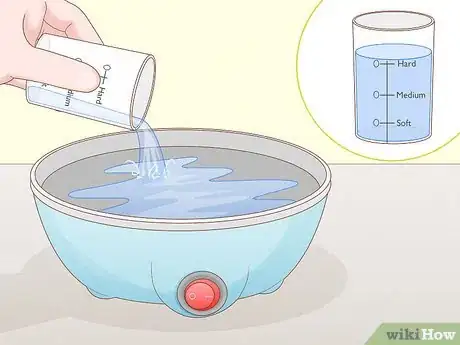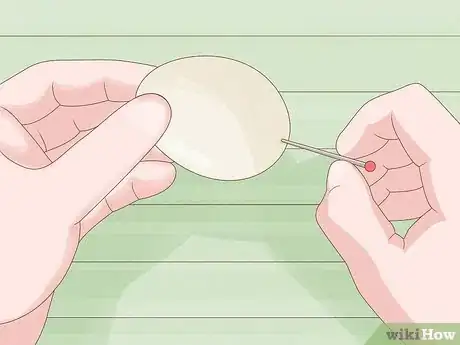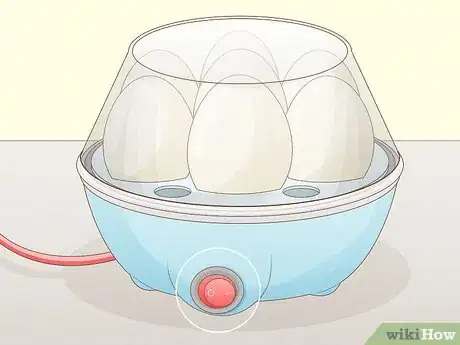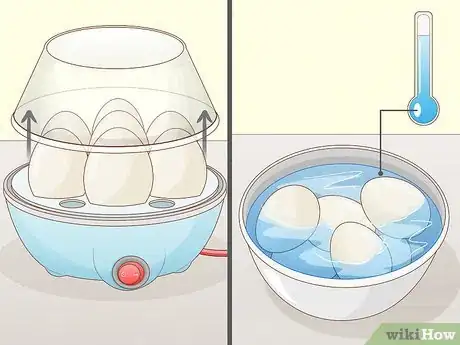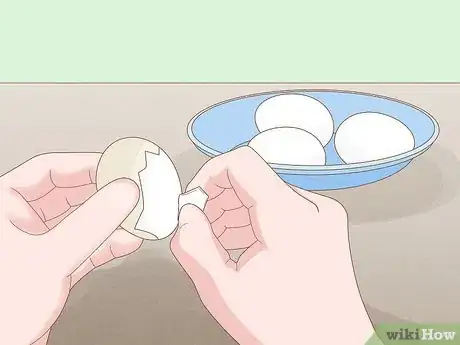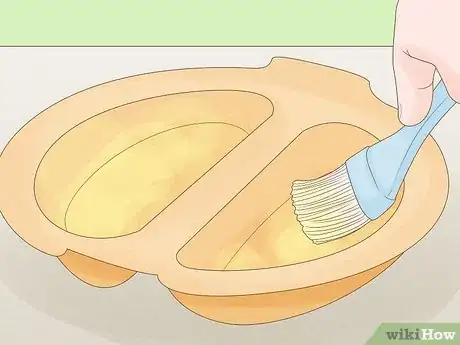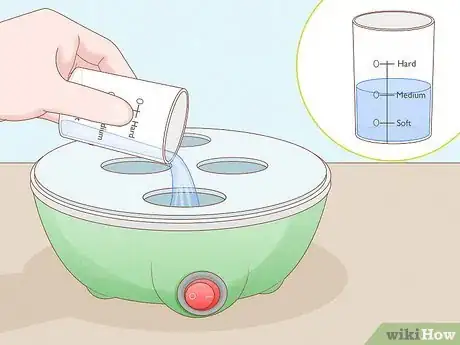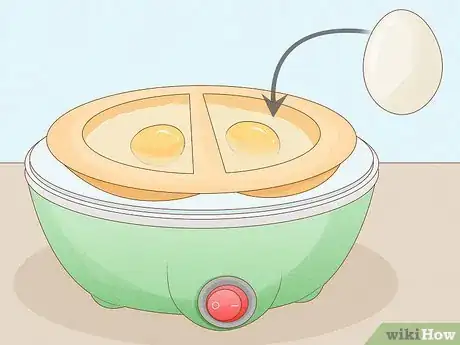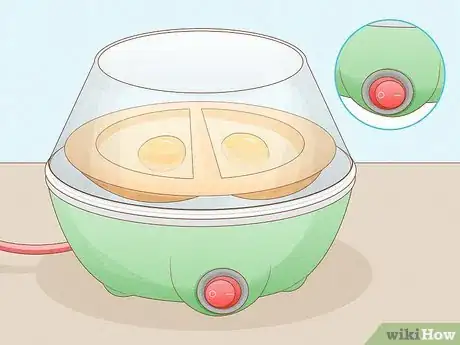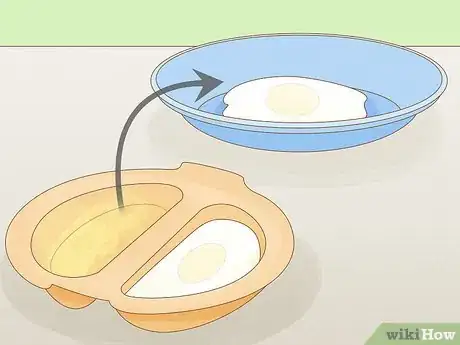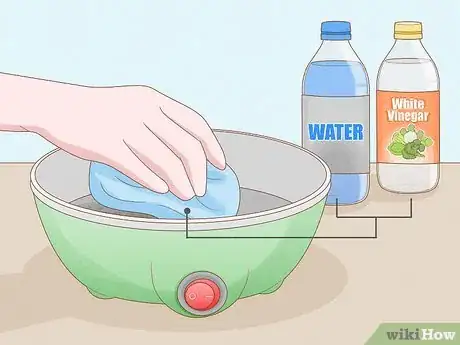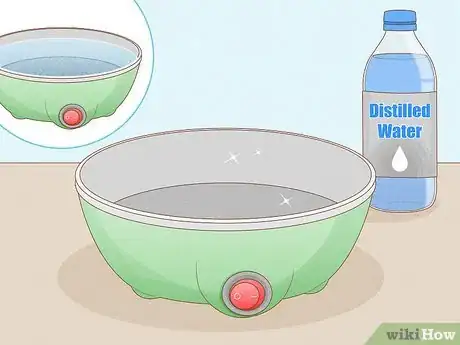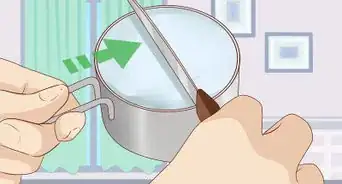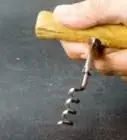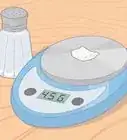wikiHow is a “wiki,” similar to Wikipedia, which means that many of our articles are co-written by multiple authors. To create this article, volunteer authors worked to edit and improve it over time.
This article has been viewed 77,929 times.
Learn more...
Egg boilers, also known as egg cookers or egg steamers, can help you cook eggs quickly and easily. They provide their own heat source and often work faster than cooking eggs on the stove. Using an egg boiler can also remove the hassle of estimating when your eggs are fully cooked, ensuring your food comes out exactly the way you like it. These simple devices can make many different types of eggs, including boiled and poached eggs as well as omelets. While most egg boilers are similar, each model varies slightly so you should read your device’s instruction manual before using it for the first time.
Steps
Cooking Soft-, Medium-, or Hard-Boiled Eggs
-
1Add the right amount of water. The amount of water to use depends on how many eggs you are cooking and how well-done you would like them to be. Use the instruction manual and labels on the measuring cup to figure out the right amount of water for what you're cooking. Add it to the water tray in the unit’s base.[1]
- Exact measurements will depend on your model but, generally, soft-boiled eggs will require less water than hard-boiled eggs.
- Most measuring cups will include specific measurement lines for soft, medium, and hard-boiled eggs.[2] .
-
2Pierce a small hole in the larger end of each egg. Most egg boilers include a pin (often found on the bottom of the measuring cup) for this purpose. This hole will help keep the egg shells from cracking as they cook.[3]Advertisement
-
3Place the eggs in the egg holder with the holes facing up. Extra-large eggs may not fit into the wells as easily, so try using regular-sized eggs unless you’re sure your boiler is big enough for larger sizes.
-
4Replace the cover and turn the egg boiler on. After you click the start button on your egg boiler, the machine will begin to steam your eggs. Some models will automatically turn off after they’re done, while others need to be turned off manually. Generally, boilers will give an audible or visual alert when the eggs are finished.
-
5Remove the lid and transfer eggs to cold water to stop cooking. Be careful to avoid escaping steam when removing the egg holder and wear oven mitts if your egg boiler does not include safety handles.[4]
-
6Peel eggs and enjoy immediately or transfer unpeeled eggs to the refrigerator. Older eggs will generally peel more easily than fresher ones. Boiled, unpeeled eggs can keep in the refrigerator for up to a week.[5]
Making Poached Eggs and Omelets
-
1Select the right tray and grease it with butter or oil. Many egg boilers come with two trays: one that is divided into smaller sections (meant for poaching eggs) and one that is not (meant for omelets). Some boilers have only one tray, which can be used for either poaching or omelets.
-
2Add the appropriate amount of water to the tray. Most egg cookers recommend using the “medium” line on the included measuring cup for poached eggs and omelets, but make sure to check the instruction manual for your model to confirm.[6]
-
3Pour eggs into the cooking tray. To poach, you can break eggs directly into the greased poaching tray. For omelets, you should whisk the eggs together first and mix in any fillings before pouring into the tray.[7]
-
4Replace the cover and turn the egg boiler on. After you click the start button on your egg boiler, the machine will begin to steam your eggs. Some machines will automatically turn off after they’re done, while others need to be turned off manually. Generally, boilers will give an audible or visual alert when the eggs are finished.
-
5Remove the lid and tray of cooked eggs. Be careful to avoid escaping steam when removing the egg tray and wear oven mitts if your egg boiler does not include safety handles.
Cleaning and Maintaining Your Egg Boiler
-
1Determine the best way to clean your egg boiler between uses. Check the instruction manual to see if the various parts of your egg boiler are dishwasher safe. If they are not, you can hand wash them in warm soapy water.
- Be sure to unplug the egg boiler and make sure it is completely cool before washing. Never submerge the base of the device that contains the electric heating unit.
-
2Clean the heating unit with a damp cloth and diluted vinegar mixture. Repeated use can lead to mineral deposits on the device, which can discolor eggs. Every once in a while, wipe the base down with a vinegar and water mixture to prevent buildup.
- For more stubborn mineral deposits, let the vinegar and water mixture sit for 30 minutes before wiping down with a damp cloth.
-
3Use distilled water to extend the life of your egg boiler. Using regular tap water can lead to mineral deposits that may corrode the device’s heating plate components. To avoid this, try using distilled water when cooking in your egg boiler.
Warnings
- Be careful to avoid hot steam when using your egg boiler. If your egg holder does not include safety handles, be sure to use oven mitts when removing it from the machine.⧼thumbs_response⧽
References
- ↑ https://www.youtube.com/watch?v=lUsCwy9yVXs
- ↑ https://www.youtube.com/watch?v=yGopICADac8
- ↑ https://www.youtube.com/watch?v=5b3Laz3NJ2k
- ↑ https://www.youtube.com/watch?v=5b3Laz3NJ2k
- ↑ https://www.incredibleegg.org/cooking-school/tips-tricks/egg-storage/
- ↑ https://www.youtube.com/watch?v=aoOI27CSzcU
- ↑ https://www.youtube.com/watch?v=aoOI27CSzcU
